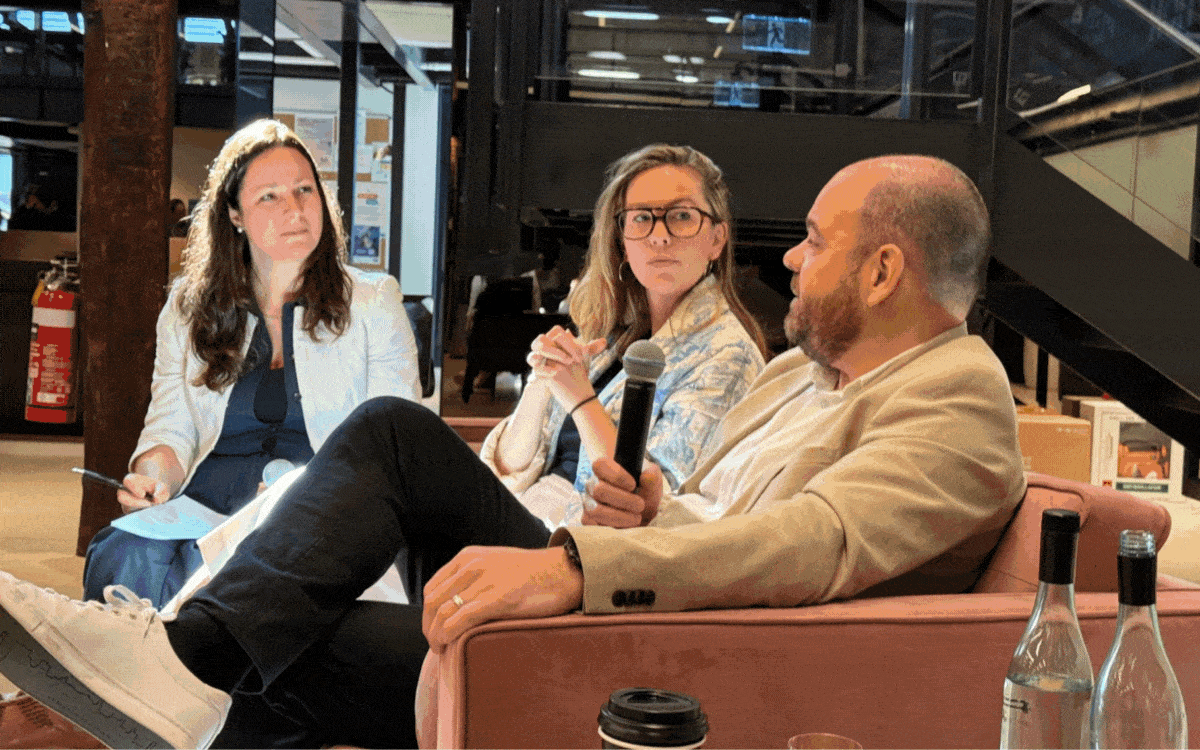MADE THIS’ Vinne Schifferstein, MD, and Marie-Celine Merret, Head of Creative Technology & AI, recently hosted a thought-provoking panel session at Clemenger BBDO Sydney exploring the legal, ethical and creative implications of AI-generated content. Guest speakers included Josephine Johnston, CEO at Copyright Agency, Rod Savage, GM Editorial Innovation at NewsCorp, and Travis Rice, Co-founder & Curator at OMNI AI Film Festival.
From copyright protection to authorship debates, transparency, and the very nature of craft and storytelling, the panel discussion didn’t offer easy answers, but a rich, thoughtful exploration of the issues. Here are the highlights.
***
Copyright in the age of machines
One of the clearest messages from the event was from Josephine Johnston, CEO of the Copyright Agency: the principles of copyright haven’t changed—even if the tools we use to create content have. Original creators must be credited and, where appropriate, compensated. This remains foundational, whether the work is generated with a pen, a camera, or a neural network.
However, AI complicates traditional notions of authorship and ownership. When a creator uses AI to generate a film, who owns the final product? Is it the person who crafted the prompt? Is the company licensing the tool? Legal frameworks are still catching up, and panellists agreed that legislative reform is both inevitable and necessary in the near future.
Transparency: When do we need to disclose AI use?
The question of transparency—especially in media and advertising—was front and centre. Should brands disclose when AI is used to create commercials, replicate human likenesses, or simulate recognisable landmarks? The answer, it seems, is: it depends. But there’s a growing consensus that when real people or culturally significant symbols are involved, some form of disclosure or ethical consideration is required. Panellists discussed the need for ethical guidelines and safeguards, particularly in high-visibility sectors.
Watermarking and attribution: A path forward?
One of the more promising ideas was the concept of digital watermarking—embedding discrete signals into AI-generated content to track its source and usage. This could serve as the backbone of a future attribution and rights management system, ensuring creators are recognised even as content is remixed, shared, or transformed across platforms.
This kind of technology could also help distinguish authentic content from AI-generated misinformation, which is becoming increasingly difficult as tools become more sophisticated. The need for better tools and processes to discern real from fake—especially in news media—was emphasised by Rod Savage, GM Editorial Innovation, NewsCorp.
Australia’s AI policies & value
As the world debates how to regulate AI, Australia is uniquely positioned. With its mix of legal rigour, innovative spirit, and strong creative industries, Johnston finds Australia is well positioned to advocate for a balanced approach: one that protects creators while also encouraging innovation.
Deals like Google’s recent agreement with the Australian Associated Press (AAP) highlight the stakes. While potentially beneficial for news organisations, such partnerships raise broader questions about what happens to creative work beyond journalism – like film, photography, and literature – when it’s used to train AI models or enhance commercial applications. Google’s example is a good step in the right direction when it comes to compensating content creators, although not all publishers are being represented by the AAP, which concerns Savage. Compensation for content creation in the broadest sense is key, and if that means global technology companies need to tap into their ample profits, that’s what should happen, according to Johnston, which was applauded by everyone in the audience.
Marie-Celine Merret also highlighted the point of value in this context. It’s not only the large tech companies that will have to compensate the makers. Clients also need to see and appreciate the value of AI-generated content. “The narrative that is going out to market at the moment is purely focused on cost savings, which needs to shift”.
Taste and storytelling still matters
Amid all the legal and ethical complexity, one theme rose above the noise: taste and storytelling are still at the heart of impactful creative work. Whether made with traditional tools or AI engines, the power of a story lies in its emotional core, its humanity, and its ability to connect.
While AI can speed up production or enhance visuals, it cannot replace the human intention behind a meaningful narrative. Travis Rice, co‑founder and curator of the OMNI AI Film Festival, put it eloquently: “The OMNI Festival is part of that evolution. Through OMNI, the focus stays on cinematic quality and storytelling, making clear that even in AI’s ascendancy, narrative and connection to culture remain king.”
The human element
AI is not going away. Whether you’re excited, sceptical, or simply curious, engaging with it is no longer optional. As someone in the audience put it: “In less than a minute, it will own the room.” But that doesn’t mean creators are powerless. In fact, the most effective way to guide AI’s evolution is for talented, thoughtful people to get involved.
Vinne Schifferstein, as moderator, echoed this sentiment, positioning the conversation not as resignation, but as empowerment. “By staying curious, critical, and committed to craft, creators can chart a course where AI supports, rather than supplants, human creativity.”
Final thoughts
The challenges posed by generative AI are nuanced and multifaceted, especially in industries like creative agencies, filmmaking and publishing, where originality and authorship are sacrosanct. There are no easy answers. But the debate made one thing clear: critically engaging with these tools, embracing complexity, and staying grounded in our creative values is the path forward.
This isn’t just a conversation about technology. It’s a conversation about who we are as storytellers, creators, and custodians of culture in a rapidly changing world.
